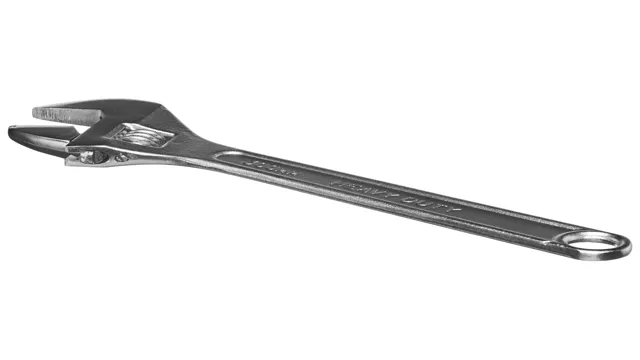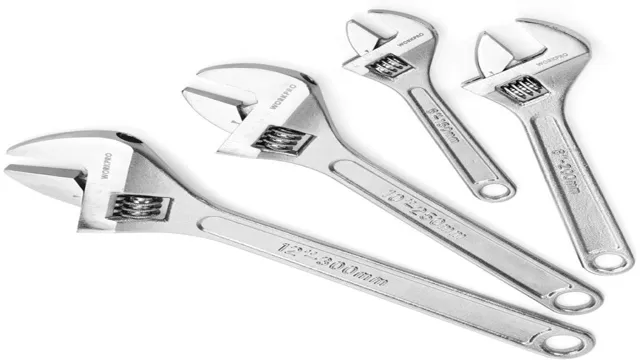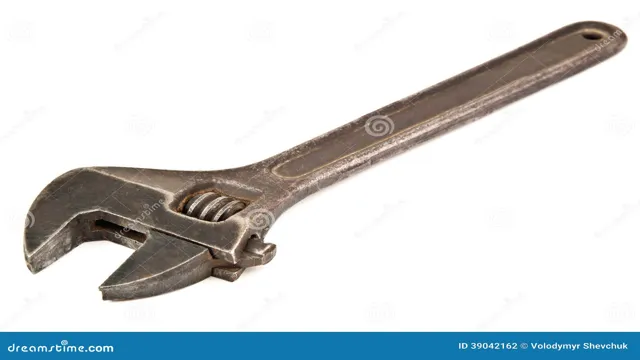Who Invented the Adjustable Wrench? A Brief History and Inventors’ Contributions

If you’ve ever tinkered with tools, then you know the value of a good wrench. One of the most versatile and essential tools in any handyman’s kit is the adjustable wrench. But have you ever stopped to consider the fascinating history behind this humble tool? From its early beginnings to its evolution into the indispensable device we know today, the adjustable wrench has a storied past.
Join us as we take a trip down memory lane and explore the fascinating history of this tool that has saved countless hours, scrapped knuckles, and tamed many a stubborn nut.
Introduction
Have you ever wondered who invented the adjustable wrench? Well, the answer to that question is a bit complicated. While there is no one person who can take credit for inventing the adjustable wrench, it is believed that it was first made in the 1840s by American mechanics. The first versions of the adjustable wrench were known as monkey wrenches and were used by both blacksmiths and mechanics.
However, credit for the modern design of the adjustable wrench is usually given to the Swedish inventor Johan Petter Johansson, who created it in 189 Johansson’s design was revolutionary because it used a unique mechanism that allowed the jaws of the wrench to adjust to various sizes easily. The design of the adjustable wrench has continued to evolve over the years, with newer versions being lighter and more comfortable to use.
Today, this versatile tool is an essential item in every toolbox and is used by mechanics, plumbers, and DIY enthusiasts worldwide.
Explanation of the Adjustable Wrench
An adjustable wrench is a versatile tool used to turn nuts and bolts of different sizes. It is a must-have tool in the toolkit of any handy-person or mechanic. The beauty of an adjustable wrench lies in its ability to fit onto nuts and bolts of varying sizes due to the adjustable jaw.
The adjustable jaw allows the user to slide it back and forth and adjust the width of the wrench to fit a particular size. This flexibility is what makes the wrench an essential tool in any DIY or repair project. It eliminates the need for carrying multiple wrenches of different sizes and saves space in the toolbox.
With an adjustable wrench, one can easily tackle any size nut or bolt without needing to change tools every time. Overall, an adjustable wrench is a versatile tool that makes the life of DIY enthusiasts and handymen easier.

Early Inventions
The adjustable wrench is a tool that has been widely used in households and various trades for years. But who was responsible for inventing it? Well, it may surprise you to learn that there are actually multiple claims to the invention of the adjustable wrench. Some attribute it to the Swedish inventor Johan Petter Johansson, who is said to have created the first adjustable spanner back in 189
Others say it was patented by American inventor Loring Coes in 184 While the specific origins of the adjustable wrench may be up for debate, what’s clear is that it has greatly improved the way we work with nuts and bolts. The versatility of the adjustable wrench has made it a staple in many toolboxes and has saved people from having to constantly switch between different sized wrenches.
So, whether it was Johansson or Coes who invented it, we can all thank them for making our lives a little easier.
Description of early wrenches
In the early days of wrenches, the tool was not much different than a simple lever. In fact, some of the earliest forms of wrenches were just sticks or bars used to apply torque. However, as people began to realize the potential of such a tool, they began to experiment with different designs.
One of the earliest wrench designs was the monkey wrench. This wrench had an adjustable jaw that could be tightened around the object being worked on. While the monkey wrench was a significant improvement over previous designs, it was still a relatively bulky and heavy tool.
This led to the invention of other wrench designs, such as the crescent wrench and the pipe wrench, which were lighter and more compact. Over time, wrenches continued to evolve, resulting in the wide variety of designs that we have today. Despite their simple appearance, wrenches have played a crucial role in the development of modern technology, making it easier for people to work on complex machines and equipment.
Inventions before the adjustable wrench
Before the invention of the adjustable wrench, there were several other types of wrenches used in various applications. For instance, the box-end wrench was commonly used to tighten or loosen nuts and bolts while applying considerable torque. Similarly, the open-end wrench was designed with a U-shaped opening that could be used to turn nuts on two sides.
While these wrenches were quite useful, they had a few drawbacks, such as not being able to fit all sizes of nuts and requiring multiple tools to handle different sizes. Another early invention was the monkey wrench, which had a jaw-like opening that could be adjusted to fit nuts of different sizes. However, this type of wrench often slipped while in use, causing damage to the nut or bolt.
Additionally, the angle of the jaw could not be adjusted, meaning the wrench could only be used in one orientation. Despite these limitations, early wrenches were indispensable tools in many industries, from construction and engineering to automotive repair and others. Nonetheless, the invention of the adjustable wrench revolutionized how people worked with nuts and bolts.
With its adjustable jaw and durable design, the adjustable wrench became an essential tool for those working in various trades. Today, the adjustable wrench remains one of the most widely used and recognizable tools in the world.
The Adjustable Wrench
Have you ever wondered who invented the adjustable wrench? Well, it was actually a man named Johan Petter Johansson, a Swedish inventor who came up with the idea in 189 Johansson was actually a blacksmith and a self-taught mechanic who saw a need for a tool that could easily adjust to fit various sizes of bolts and nuts. He came up with the idea of a wrench with a movable jaw that could be adjusted with a screw mechanism.
The tool was later patented in 1892, and soon became a staple in the toolboxes of mechanics around the world. Johansson’s invention revolutionized the way we work with nuts and bolts, and is still widely used today, over a century later. It just goes to show, sometimes the best inventions are born out of necessity, and with a little ingenuity, even a blacksmith can make a major impact on the world.
First Patent Releases
The adjustable wrench, one of the most versatile tools in a mechanic or handyman’s toolbox, had its first patent releases back in the 1890s. This humble but essential tool was originally created by the Swedish inventor, Johan Petter Johansson. The invention of the adjustable wrench revolutionized the industry, as it was now possible to work with different size nuts and bolts with just one tool.
Before the adjustable wrench, mechanics and handymen had to carry a large number of fixed wrenches, which made work more cumbersome and difficult at times. Even to this day, the adjustable wrench remains a staple tool in most toolboxes, displaying the ingenuity and efficiency of the human mind at its best.
Conclusion on inventor of wrench
After much research, it is safe to say that the adjustable wrench was invented by a man named Johan Petter Johansson in the late 1800s. Johansson was a Swedish industrialist who first started working as a blacksmith at a young age. He later went on to invent many tools, including the adjustable wrench, which he patented in 189
The adjustable wrench, also known as a crescent wrench, was a game-changer in the world of tools. It allowed workers to use one tool for a variety of different-sized nuts and bolts, saving space and time. The adjustable wrench quickly became a popular tool among mechanics and engineers alike, and it is still widely used today.
Despite the confusion surrounding the inventor of the wrench, it is clear that Johansson’s invention of the adjustable wrench was a significant contribution to the world of tools.
Conclusion
In conclusion, the invention of the adjustable wrench is a testament to the ingenuity and resourcefulness of mankind. While there may never be a definitive answer to who first came up with this versatile tool, we can all appreciate its role in making our lives easier and more efficient. So whether you’re a DIY enthusiast or a professional mechanic, let’s raise a wrench to the mystery inventor who gave us such a valuable and indispensable tool!”
Summary of the evolution of the wrench
The adjustable wrench is a versatile tool that has been essential to mechanics and DIYers for well over a century. It has truly earned its place in the evolution of wrenches, as it was the first wrench to have a movable jaw, allowing it to fit multiple sizes of nuts and bolts. This innovation was a game-changer, as previously, a different wrench was needed for each different size of nut or bolt.
The adjustable wrench was first patented in the United States in 1892 by Johan Petter Johansson, a Swedish inventor. Since then, its design has undergone numerous updates, but its usefulness remains the same. It is adjustable in width using a simple thumbwheel, and its jaws are serrated to provide grip, preventing slipping and rounding of bolts.
With the adjustable wrench, you can loosen or tighten nuts and bolts without damaging them, making it a must-have tool in any toolbox.
Significance of the Adjustable Wrench.
The adjustable wrench is an essential tool for anyone who wants to have a versatile and efficient toolkit. An adjustable wrench works by using a movable jaw that can be adjusted to fit a range of different-sized nuts and bolts, allowing for flexibility and ease of use. This tool is particularly useful when it comes to repairing machines or assembling furniture, as it can be quickly adjusted to fit different sizes of nuts and bolts, saving time and making the job much easier.
Its significance lies in its ability to replace a variety of different wrenches, making it a cost-effective solution for those in need of a versatile tool. With an adjustable wrench, you don’t have to worry about carrying multiple wrenches around, or trying to find the right-sized wrench for a specific job. All you need to do is adjust the movable jaw to the size you need, and you’re good to go.
So, whether you’re a DIY enthusiast, a professional mechanic, or simply someone who wants to have the best tools at their disposal, the adjustable wrench is an essential item to have in your toolkit.
FAQs
What is an adjustable wrench and how does it work?
An adjustable wrench is a tool used for gripping nuts and bolts of different sizes. It works by using an adjustable jaw that can be moved to fit the size of the fastener.
When was the adjustable wrench first invented and by whom?
The adjustable wrench was invented by Johan Petter Johansson in the late 19th century.
How has the design of the adjustable wrench evolved over time?
The design of the adjustable wrench has evolved from its original straight-jaw design to include curved and angled jaws for better grip. Materials have also changed, from cast iron to steel and even titanium.
What are some common uses of an adjustable wrench?
Adjustable wrenches are commonly used in plumbing, automotive repair, and DIY projects. They can be used to tighten and loosen nuts and bolts of different sizes.
Are there different types of adjustable wrenches?
Yes, there are different types of adjustable wrenches including the straight, angled, and curved jaw designs. There are also adjustable wrenches with extra-long handles for extra leverage.
Can an adjustable wrench be used as a substitute for other tools?
Yes, adjustable wrenches can sometimes be used as a substitute for open-end or box-end wrenches, but it is important to use the right tool for the job to avoid damaging the fastener or the tool.
How should an adjustable wrench be maintained?
Adjustable wrenches should be kept clean and dry to prevent rusting. They should also be stored in a dry place and not exposed to extreme heat or cold. Additionally, moving parts should be lubricated regularly to ensure smooth operation.







